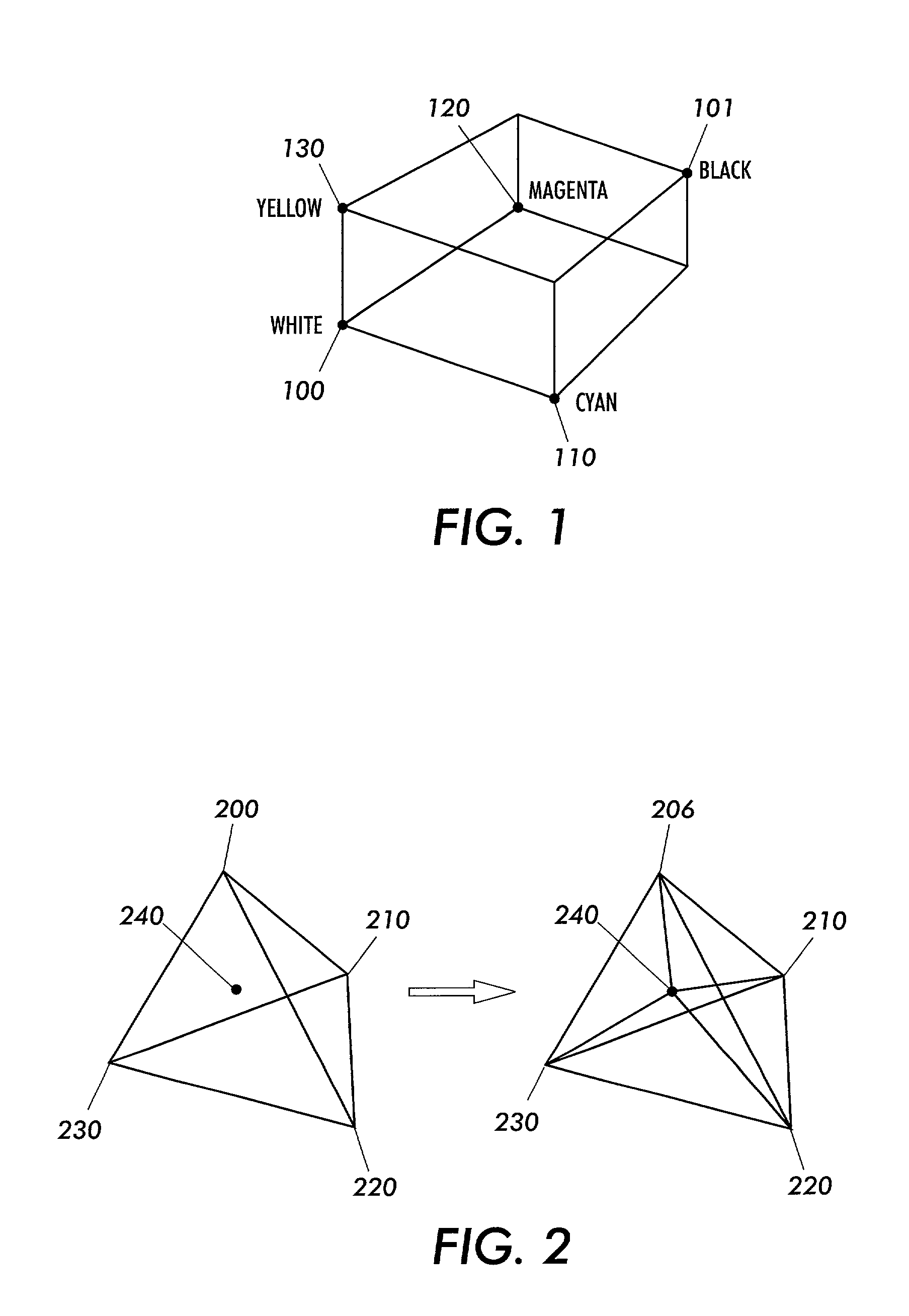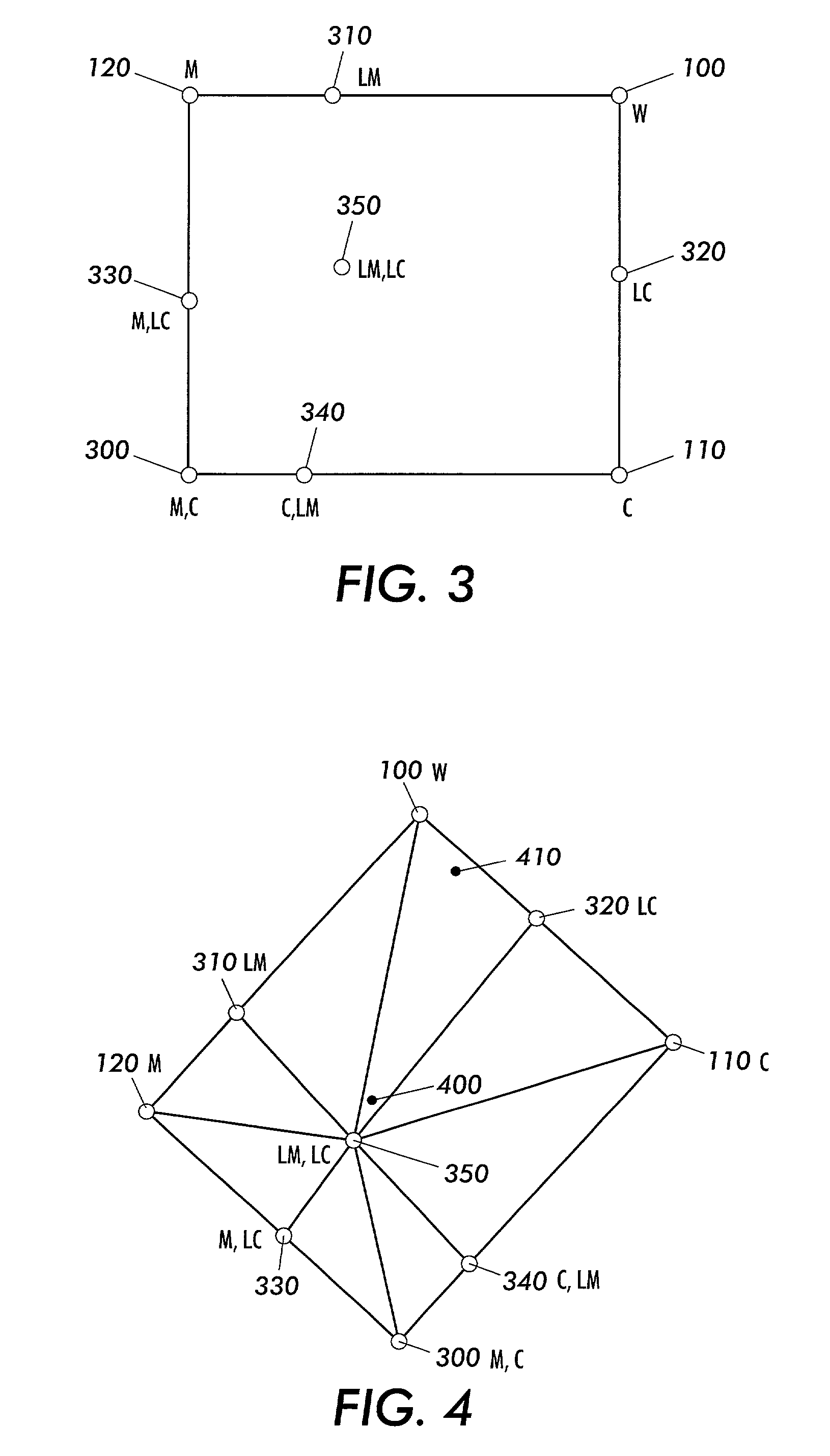Method for color halftoning when utilizing redundant color inks
a color ink and color halftone technology, applied in the direction of digitally marking record carriers, digital output to print units, instruments, etc., can solve the problems of not being able to control the contrast between neighboring magenta and cyan values, the approach designed for a gray scale system does not generalize well to colors and color space, etc., to minimize the luminance variation of the redundant color ink, and minimize the luminance variation of the redundant color in
- Summary
- Abstract
- Description
- Claims
- Application Information
AI Technical Summary
Benefits of technology
Problems solved by technology
Method used
Image
Examples
Embodiment Construction
[0017] FIG. 1 provides a simple three-dimensional rendering of color space. This is a simplistic model intended for discussion purposes. At opposing vertices 100 and 101 are found the extremes of white and black respectively. An imaginary line drawn between white vertex 100 and black vertex 101 would represent the linear gamut for luminance. Vertex 110 represents pure cyan; vertex 120 represents pure magenta; and vertex 130 represents pure yellow.
[0018] In a typical color system, all the needed colors are rendered using combinations of the above; i.e. yellow, magenta, cyan and black (YMCK). In a redundant color system, there will be some larger set of colorants available. For the purposes of one preferred embodiment, and not to be limited by same, the following Table 1 presents a list of possible colorants and colors formed from the selected combination of two of those colorants for one such embodiment of a redundant color system:
1 TABLE 1 1 White 2 Cyan 3 Magenta 4 Yellow 5 Light c...
PUM
 Login to View More
Login to View More Abstract
Description
Claims
Application Information
 Login to View More
Login to View More - R&D
- Intellectual Property
- Life Sciences
- Materials
- Tech Scout
- Unparalleled Data Quality
- Higher Quality Content
- 60% Fewer Hallucinations
Browse by: Latest US Patents, China's latest patents, Technical Efficacy Thesaurus, Application Domain, Technology Topic, Popular Technical Reports.
© 2025 PatSnap. All rights reserved.Legal|Privacy policy|Modern Slavery Act Transparency Statement|Sitemap|About US| Contact US: help@patsnap.com



